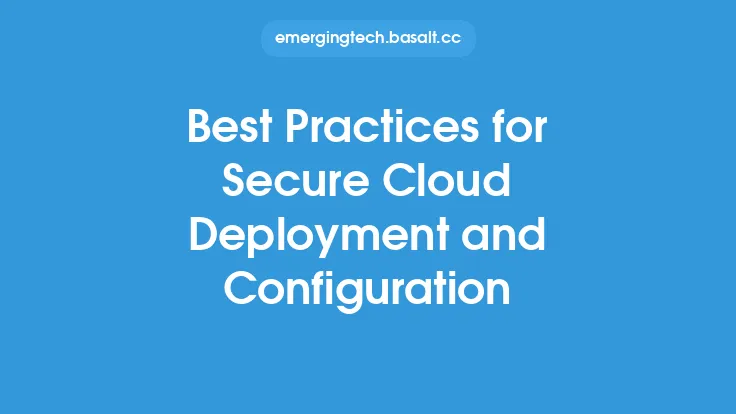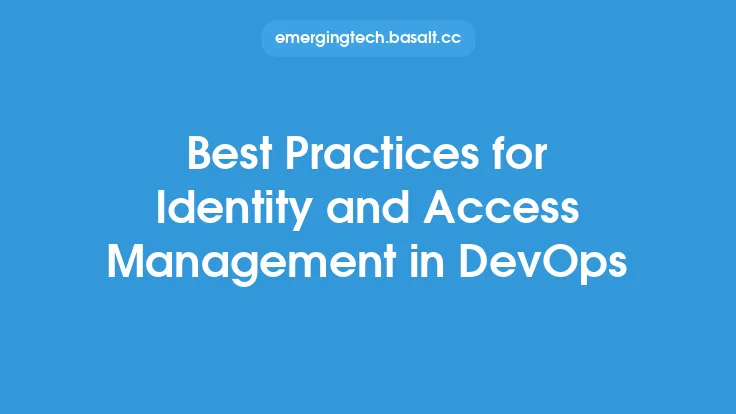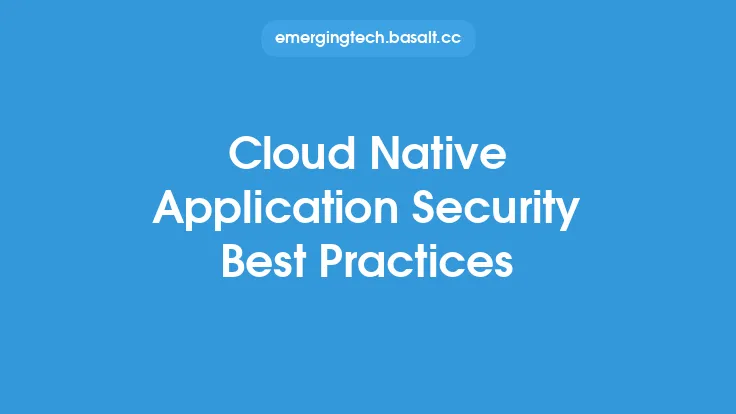As more businesses and individuals move their data to the cloud, security and access control have become major concerns. Cloud storage security is a critical aspect of cloud computing, and it's essential to implement best practices to protect sensitive data from unauthorized access, breaches, and other security threats. In this article, we'll explore the best practices for cloud storage security and access control, providing you with the knowledge and tools to safeguard your data in the cloud.
Introduction to Cloud Storage Security
Cloud storage security refers to the measures and protocols put in place to protect data stored in the cloud from unauthorized access, use, disclosure, disruption, modification, or destruction. This includes ensuring the confidentiality, integrity, and availability of data, as well as complying with relevant laws and regulations. Cloud storage security involves a combination of people, processes, and technology to ensure the secure storage and management of data in the cloud.
Authentication and Authorization
Authentication and authorization are critical components of cloud storage security. Authentication verifies the identity of users, while authorization determines what actions they can perform on the data. Best practices for authentication and authorization include:
- Implementing multi-factor authentication (MFA) to add an extra layer of security
- Using role-based access control (RBAC) to assign permissions based on user roles
- Limiting access to sensitive data to only those who need it
- Regularly reviewing and updating access controls to ensure they remain effective
Data Encryption
Data encryption is a crucial aspect of cloud storage security, as it protects data from unauthorized access. Best practices for data encryption include:
- Using end-to-end encryption to ensure data is encrypted both in transit and at rest
- Implementing server-side encryption to encrypt data stored on cloud servers
- Using client-side encryption to encrypt data before it's uploaded to the cloud
- Regularly reviewing and updating encryption protocols to ensure they remain effective
Access Control and Permissions
Access control and permissions are essential for ensuring that only authorized users can access and modify data. Best practices for access control and permissions include:
- Implementing least privilege access to ensure users only have the permissions they need
- Using access control lists (ACLs) to define permissions for users and groups
- Regularly reviewing and updating permissions to ensure they remain effective
- Using cloud storage providers that offer granular access control and permissions
Monitoring and Auditing
Monitoring and auditing are critical components of cloud storage security, as they help detect and respond to security incidents. Best practices for monitoring and auditing include:
- Implementing logging and monitoring to track user activity and system changes
- Using cloud storage providers that offer real-time monitoring and alerts
- Regularly reviewing logs and audit trails to detect potential security incidents
- Implementing incident response plans to respond to security incidents quickly and effectively
Compliance and Governance
Compliance and governance are essential for ensuring that cloud storage security meets relevant laws and regulations. Best practices for compliance and governance include:
- Implementing compliance frameworks and standards, such as HIPAA or PCI-DSS
- Regularly reviewing and updating policies and procedures to ensure compliance
- Using cloud storage providers that offer compliance and governance features
- Ensuring that cloud storage security meets relevant industry standards and best practices
Cloud Storage Provider Security
Cloud storage providers play a critical role in cloud storage security, as they are responsible for securing the underlying infrastructure. Best practices for cloud storage provider security include:
- Researching and evaluating the security features and protocols of cloud storage providers
- Using cloud storage providers that offer robust security features, such as encryption and access control
- Regularly reviewing and updating cloud storage provider security features to ensure they remain effective
- Ensuring that cloud storage providers comply with relevant laws and regulations
User Education and Awareness
User education and awareness are critical components of cloud storage security, as they help prevent security incidents caused by user error. Best practices for user education and awareness include:
- Providing regular training and education on cloud storage security best practices
- Implementing security awareness programs to educate users on potential security threats
- Encouraging users to report potential security incidents
- Ensuring that users understand the importance of cloud storage security and their role in protecting sensitive data
Incident Response and Disaster Recovery
Incident response and disaster recovery are essential for responding to security incidents and ensuring business continuity. Best practices for incident response and disaster recovery include:
- Implementing incident response plans to respond to security incidents quickly and effectively
- Regularly testing and updating incident response plans to ensure they remain effective
- Implementing disaster recovery plans to ensure business continuity in the event of a disaster
- Ensuring that cloud storage providers offer disaster recovery features, such as data replication and backup.
Conclusion
Cloud storage security is a critical aspect of cloud computing, and it's essential to implement best practices to protect sensitive data from unauthorized access, breaches, and other security threats. By following the best practices outlined in this article, you can ensure the secure storage and management of your data in the cloud. Remember to regularly review and update your cloud storage security measures to ensure they remain effective, and always prioritize the security and integrity of your data.





